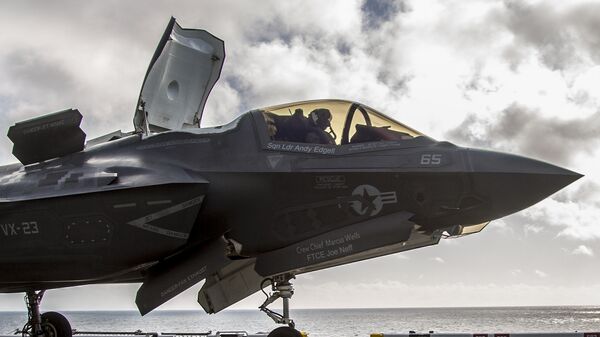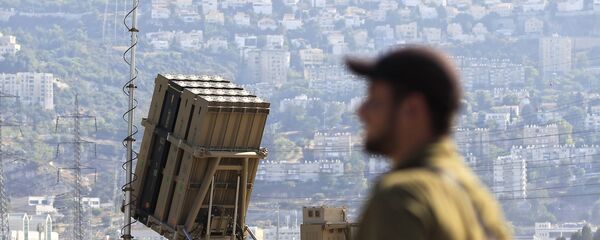On Tuesday, Northrop Grumman summoned reporters to its offices in Maryland to reveal the results of the experiment conducted three years ago with DAS. The experiment gathered data from its distributed aperture system (DAS), ran it through certain algorithms to build a 3-D simulated view of a missile trajectory, and transferred that 3-D moving picture over the a tactical data exchange called "Link 16," according to Defense One.
The jet's DAS is intended to give pilots an undistorted view of everything happening above, below and around the aircraft. While intercepting ballistic missiles is notoriously difficult for the US ballistic missile defense apparatus, thwarting the missile during the initial "boost" phase provides the greatest opportunity to neutralize the threat, according to US researchers.
DAS is made up of around six 17-pound electro-optical and infrared sensors mounted on various locations of each F-35. Originally designed to help pilots "see through the plane" to detect missiles and hostile aircraft, the system has applications for improving ballistic missile defense, too.
Once the data arrives at Link 16, the Terminal High Altitude Area Defense (THAAD) can be alerted. THAAD is a US Army missile defense system designed to neutralize short- and intermediate-range ballistic missiles.
The data could also go to basically any layer of the ballistic missile defense architecture, a Northrop business manager told Defense One.
"That information can go straight to the Patriot [missile system], THAAD, or anywhere else who has communication with that platform," said John Montgomery, who works in Northrop's targeting division.
"You can give that information to a shooter. That shooter now has information to go and put his information in the right place. Thus the radar doesn't have to search, it goes ‘I know where [the missile] is; it's right there," according to Montgomery.
"I can tell you right now that this system, as depicted here, really does help the ballistic missile environment," Montgomery added.
When Congressman Duncan Hunter said at a conference in Washington last month that the F-35 could shoot down North Korean missiles and prevent a nuclear attack, Jeffrey Lewis of the Middlebury Institute of International Studies told Vice it was "cray cray" and would never work. Hunter's description of how the F-35 would prevent the attacks — that simply by firing AIM-120 Advanced Medium Range Air-to-Air Missiles (AMRAAMs), the missile would go down "like an act of God" — may have been off the mark. But according to the new report, Hunter has been somewhat vindicated in his view that the F-35 could play an important role in missile defense operations.





